How to Stay Safe During Your First Ice Fishing Trip
Ice fishing offers a thrilling winter adventure, combining the peaceful solitude of fishing with the unique challenges of frigid conditions. For first-timers, however, the frozen landscape presents serious safety considerations that shouldn’t be taken lightly. From understanding ice thickness to preparing for emergencies, knowing how to stay safe can make the difference between an enjoyable outing and a dangerous situation.
This comprehensive guide will walk you through essential safety measures to ensure your first ice fishing experience is both memorable and secure.
Understanding Ice Safety Fundamentals
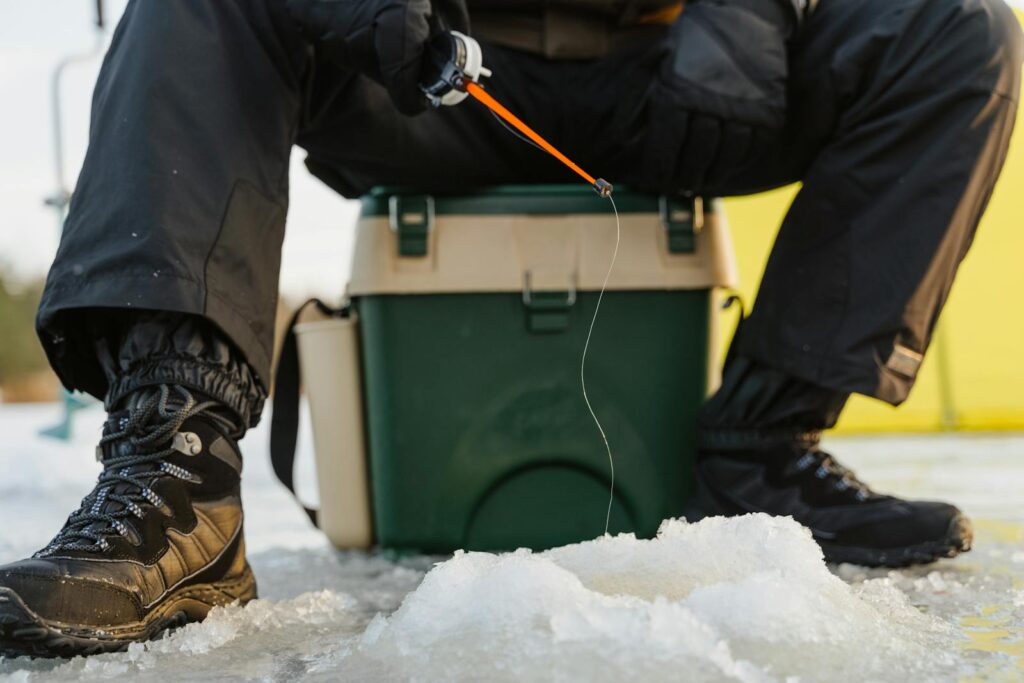
Before venturing onto frozen water, understanding basic ice safety principles is absolutely critical. Clear, blue ice is typically stronger than white or opaque ice, which contains air bubbles and is approximately half as strong as clear ice. Ice thickness requirements vary depending on the activity, with 4 inches being the minimum recommended thickness for ice fishing on foot. Remember that ice conditions can change dramatically within short distances, especially near moving water, springs, or areas with vegetation. Never assume ice is safe based solely on others’ presence, as ice thickness can vary significantly across a single body of water.
Essential Equipment for Ice Safety

Proper safety equipment can be lifesaving during an ice fishing expedition. Ice picks or awls should be worn around your neck, allowing you to pull yourself out should you fall through the ice. A throw rope of at least 50 feet enables you to assist others in emergency situations without endangering yourself. A personal flotation device or float coat provides crucial buoyancy if you break through, while ice cleats prevent dangerous slips and falls on slick surfaces. Additionally, a spud bar or ice chisel helps test ice thickness as you move across the frozen surface, allowing you to identify dangerous thin spots before it’s too late.
Checking Ice Thickness Properly
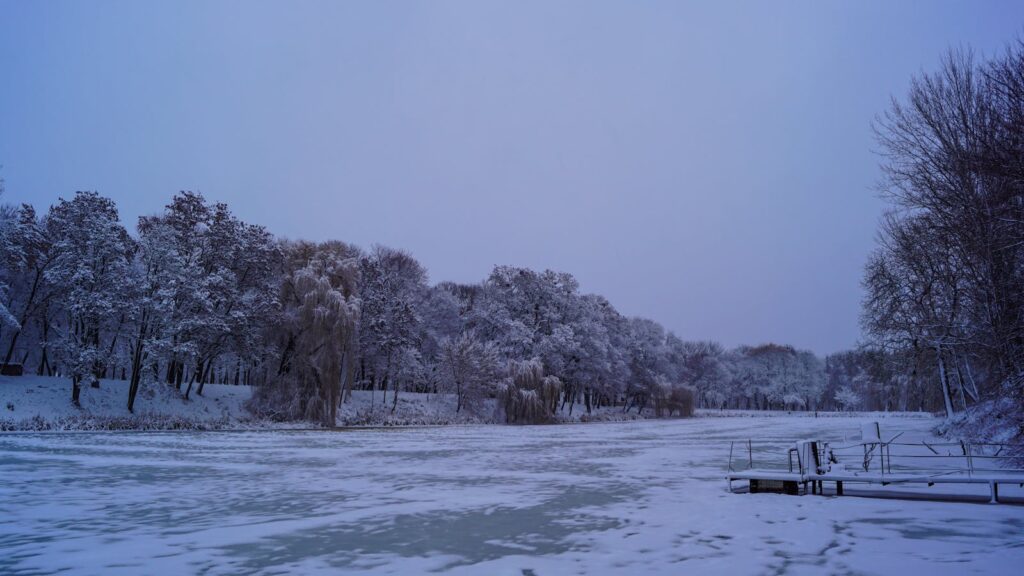
Never venture onto ice without first verifying its thickness using appropriate methods. Use an ice auger, spud bar, or cordless drill with a long bit to create test holes every 150 feet as you move away from shore. The recommended minimum ice thickness varies by activity: 4 inches for walking or ice fishing, 5-6 inches for snowmobiles or ATVs, and 8-12 inches for cars or small trucks. Remember that these guidelines apply to clear, solid ice formed under ideal conditions, and should be increased if the ice is white or snow-covered. Visual inspection alone is insufficient; physical measurement is the only reliable method to determine if ice can safely support your weight.
Dressing Appropriately for Extreme Conditions
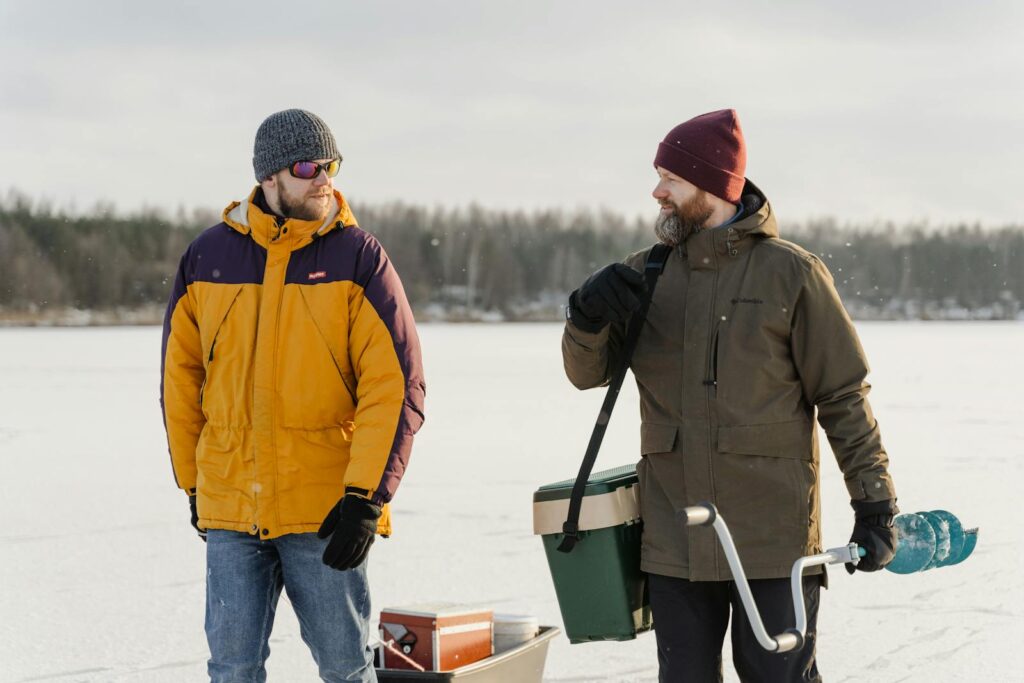
Proper clothing is your first defense against hypothermia and frostbite during ice fishing expeditions. Layer your clothing starting with moisture-wicking base layers that pull sweat away from your skin, followed by insulating mid-layers like fleece or wool, and topped with a windproof, waterproof outer shell. Extremities require special attention – insulated, waterproof boots rated for sub-zero temperatures, thermal socks, waterproof gloves or mittens, and a warm hat that covers your ears are essential items. Hand and foot warmers can provide additional comfort during extended outings, while a face mask or balaclava protects exposed facial skin from frostbite in windy conditions.
Remember that cotton clothing should be avoided entirely as it loses insulating properties when wet.
Traveling Safely Across Ice

When moving across frozen lakes or rivers, following proper travel protocols significantly reduces risk. Always fish with at least one companion and maintain a safe distance of about 20 feet between individuals to prevent concentrated weight in one area. Distribute weight by carrying equipment on a sled rather than in a backpack, and follow established trails when possible. Avoid areas with known hazards such as pressure ridges, moving water, springs, or recent ice breaks. When crossing questionable areas, unbuckle any backpack or equipment straps so they can be quickly removed if you fall through.
Remember to listen for cracking sounds and be alert for any visual changes in ice color or texture that might signal danger.
Setting Up a Safe Fishing Location
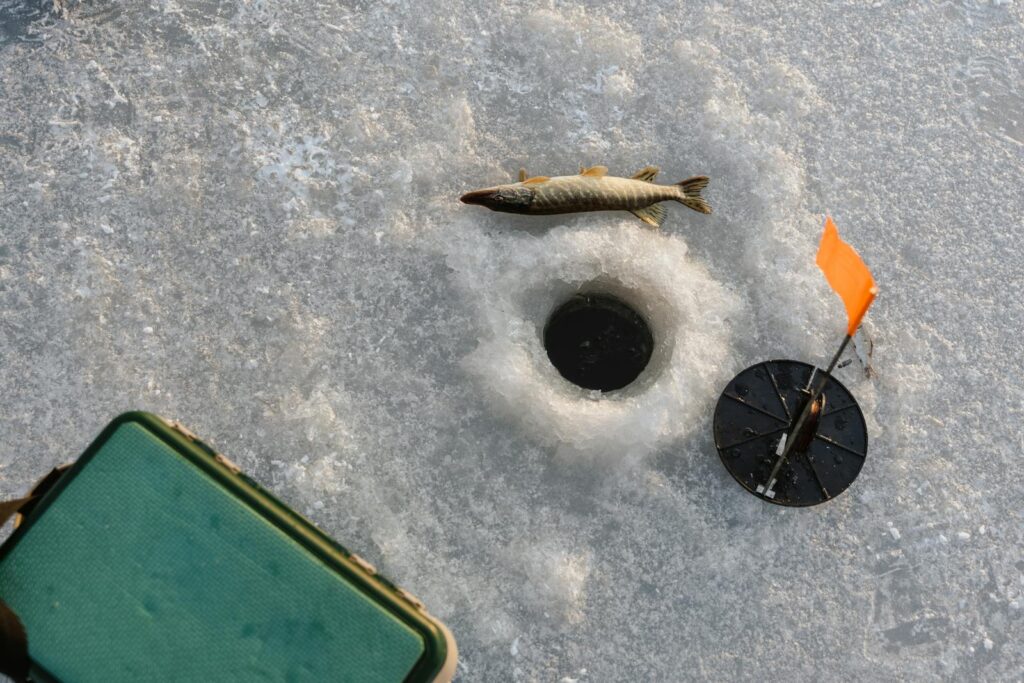
Choosing the right spot for your ice fishing operation involves several safety considerations beyond just finding where the fish are biting. Avoid areas near bridges, culverts, channels, or river mouths where currents weaken ice from underneath. Stay away from docks, pilings, and other structures that absorb heat and weaken surrounding ice. Set up at least 50 feet away from other anglers to prevent too much weight concentration in one area. Before drilling your fishing holes, carefully test the ice thickness in your chosen location, ideally using multiple test holes to verify consistent thickness.
Remember that inlet areas often have thinner ice due to moving water, even when other parts of the lake appear solid.
Handling Tools and Equipment Safely
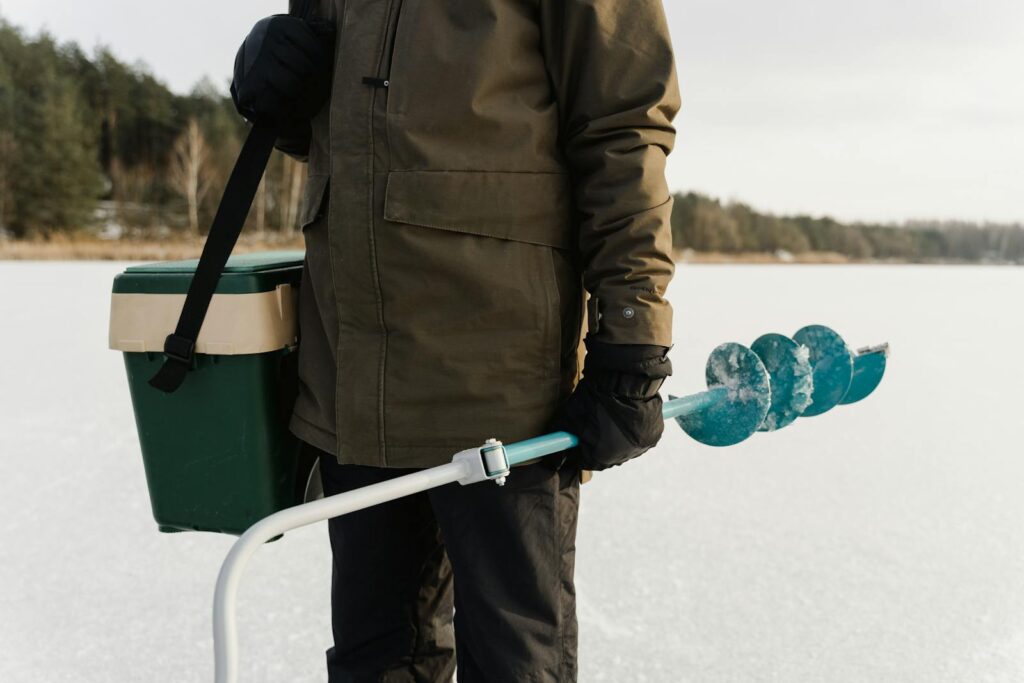
Ice fishing requires specialized tools that demand proper handling to prevent injuries. When using an ice auger, maintain firm footing and keep the blade covered when not in use, especially when walking. Store ice picks or spikes in protective covers but keep them accessible for emergency use. Ensure heaters are stable, well-ventilated, and kept away from flammable materials to prevent fire or carbon monoxide poisoning. When handling fishing line and hooks in cold conditions, move deliberately to avoid puncture wounds, which can be particularly dangerous in remote winter settings.
Always secure equipment when not in use to prevent items from sliding across ice or creating tripping hazards.
Understanding Weather Impacts on Ice Conditions
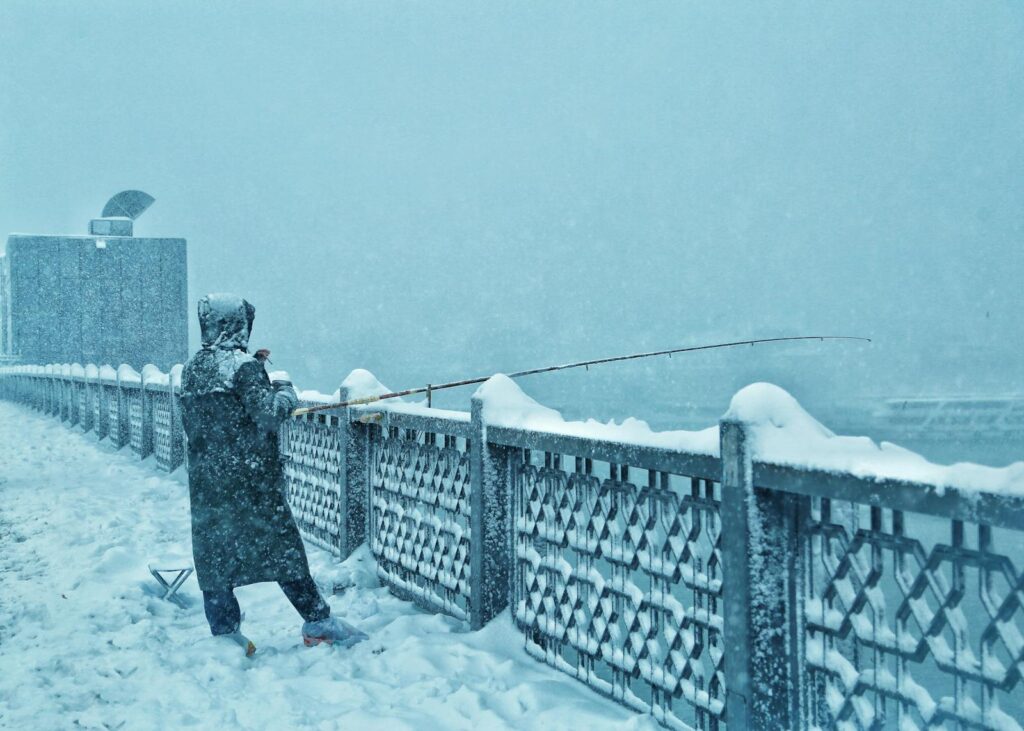
Weather patterns significantly affect ice safety, often in ways that aren’t immediately visible. Extended warm periods, even if temperatures remain below freezing, gradually weaken ice from the bottom up. Rain has a devastating effect on ice integrity, creating dangerous slush layers and accelerating deterioration. Strong winds can push water beneath the ice, creating pressure that may cause unexpected breakage even in thick sections. Late season sunshine becomes increasingly dangerous as it intensifies in strength, rapidly deteriorating ice even when air temperatures remain cold.
Always check weather forecasts before heading out, and consider canceling your trip if warming temperatures, rain, or high winds are predicted.
Recognizing Warning Signs of Unsafe Ice

Learning to identify dangerous ice conditions can prevent life-threatening situations during your fishing expedition. Visible cracks, especially those that radiate outward when weight is applied, indicate unstable conditions that require immediate retreat to shore. Areas of discolored ice often signal thin spots or places where water has seeped onto the surface and refrozen. Listen for hollow sounds when testing with a spud bar, which may indicate air pockets or separation between ice layers. Standing water or slush on top of ice reveals serious deterioration and should be avoided entirely.
Finally, be wary of ice near pressure ridges, which form when ice sheets collide and create unstable zones that may appear deceptively solid.
What to Do If You Fall Through the Ice
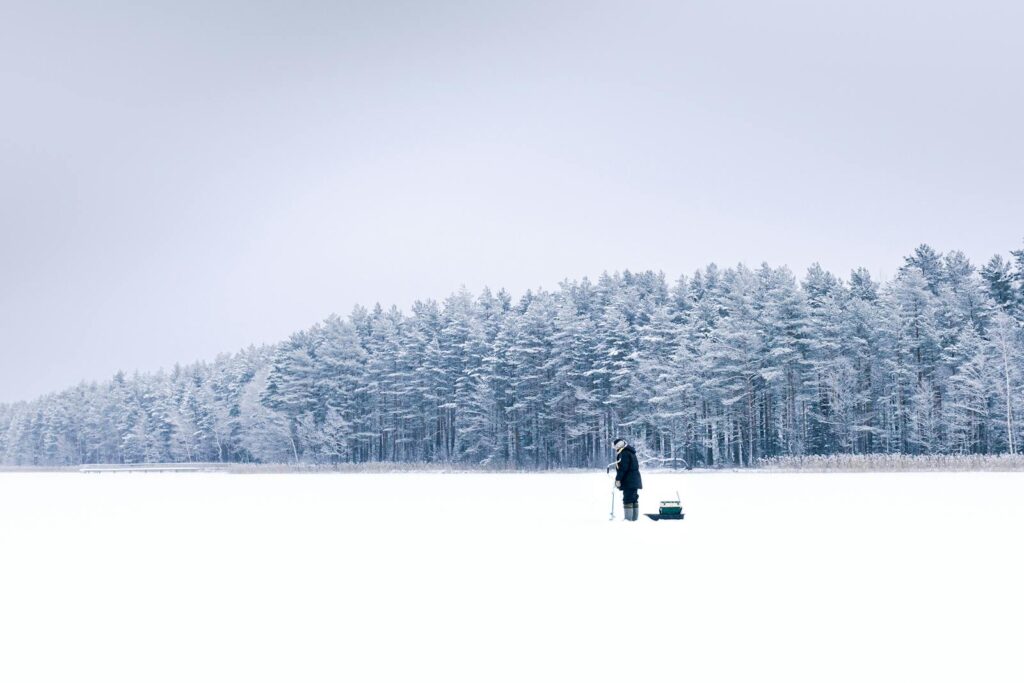
If you break through the ice, responding correctly in the first minute is crucial to survival. Fight the initial panic and resist the gasping reflex that occurs when hitting cold water. Turn immediately toward the direction you came from, where the ice was strong enough to support you previously. Extend your arms forward onto the ice surface and kick your feet to achieve a horizontal position, then use ice picks to pull yourself forward while kicking. Once partially out, roll away from the hole rather than standing immediately, distributing your weight over a larger area. Continue rolling until you’re well away from the broken area before attempting to stand or crawl.
Remember that wet clothing will freeze quickly, so seeking immediate warmth is essential for survival.
Rescuing Others Safely

Attempting an ice rescue without proper knowledge can result in multiple victims instead of successful rescue. If someone falls through, resist the impulse to run toward them; instead, call for emergency help immediately and then approach cautiously. Extend a reaching assist using a pole, ladder, rope, or even a line of rescuers lying flat on the ice and holding onto each other’s ankles. Never stand near the hole’s edge as this concentrates weight and risks breaking more ice. If possible, throw flotation devices to the victim while maintaining your distance from the break.
Instruct the victim to kick their feet while holding the rescue device, helping them achieve a horizontal position for easier extraction onto solid ice.
Creating an Emergency Action Plan
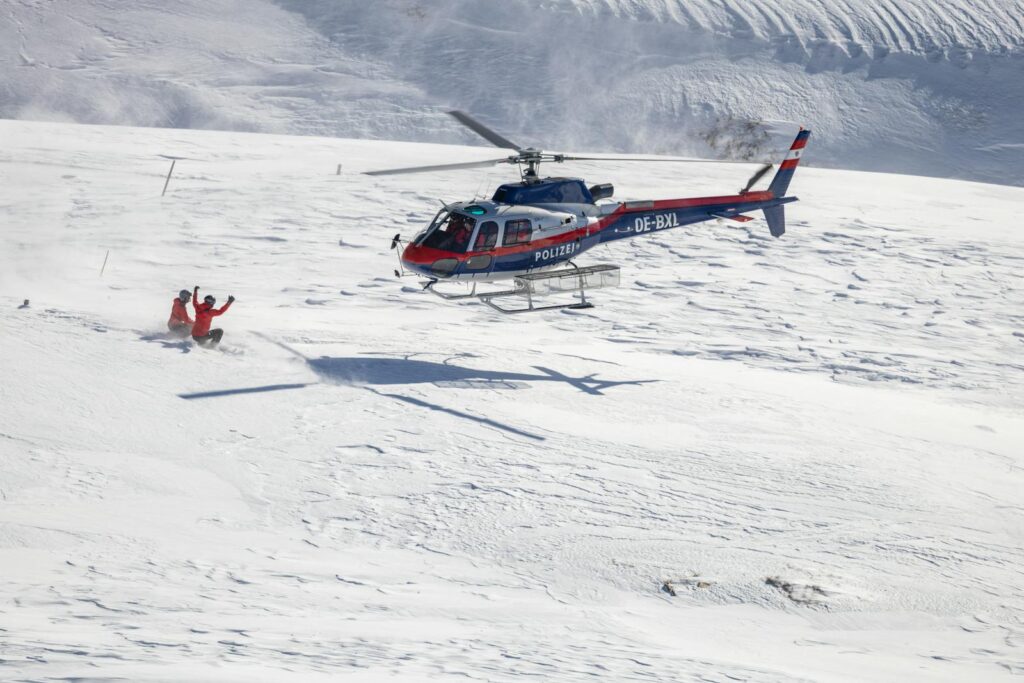
Before your fishing trip, develop a detailed emergency action plan that everyone in your party understands. Share your exact fishing location and expected return time with someone who’s not joining the expedition. Program local emergency numbers into your phone and consider bringing a waterproof case for electronics. Pack emergency supplies including dry clothes in waterproof bags, high-energy food, waterproof matches, a first aid kit, and chemical hand warmers. Familiarize yourself with the signs of hypothermia and frostbite so you can recognize them in yourself or companions.
Establish clear communication signals with your fishing partners and decide in advance how you’ll handle various emergency scenarios, including who will go for help if someone is injured.
Post-Emergency Medical Considerations

Understanding proper medical response after ice-related emergencies can prevent long-term complications or even death. If someone has been immersed in cold water, remove wet clothing immediately and replace with dry items or blankets, focusing first on the core body rather than extremities. Seek medical attention even if the victim appears to recover, as delayed symptoms of hypothermia can develop hours after exposure. Avoid rubbing frostbitten areas or applying direct heat, which can cause tissue damage; instead, warm affected areas gradually with body heat or lukewarm (not hot) water.
Watch for signs of afterdrop—a dangerous continued cooling of core temperature that can occur after rescue—which requires immediate professional medical intervention. Remember that seemingly minor cold injuries can become serious if not properly treated.
Conclusion

Ice fishing offers unique thrills and peaceful winter solitude, but respecting the inherent dangers of frozen lakes is essential, especially for beginners. By thoroughly understanding ice formation, properly checking thickness, dressing appropriately, and preparing for emergencies, you can significantly reduce risks while enjoying this traditional winter activity. Remember that no fish is worth your life—when in doubt about conditions, postpone your trip for another day. With proper preparation and a healthy respect for nature’s power, your first ice fishing adventure can be the beginning of a safe, rewarding winter tradition for years to come.

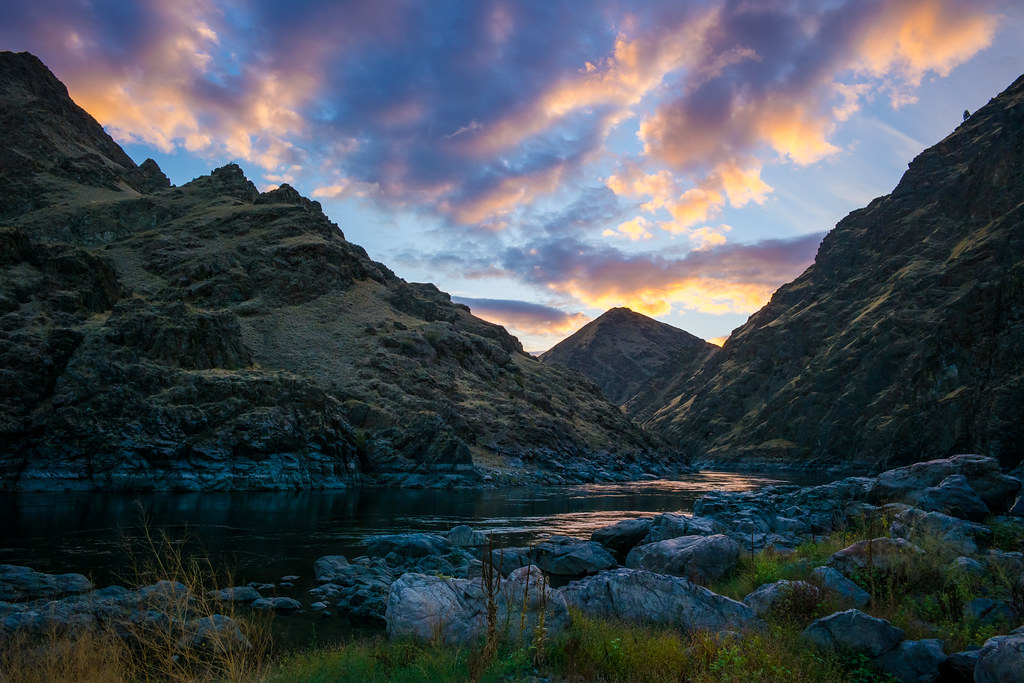












Post Comment